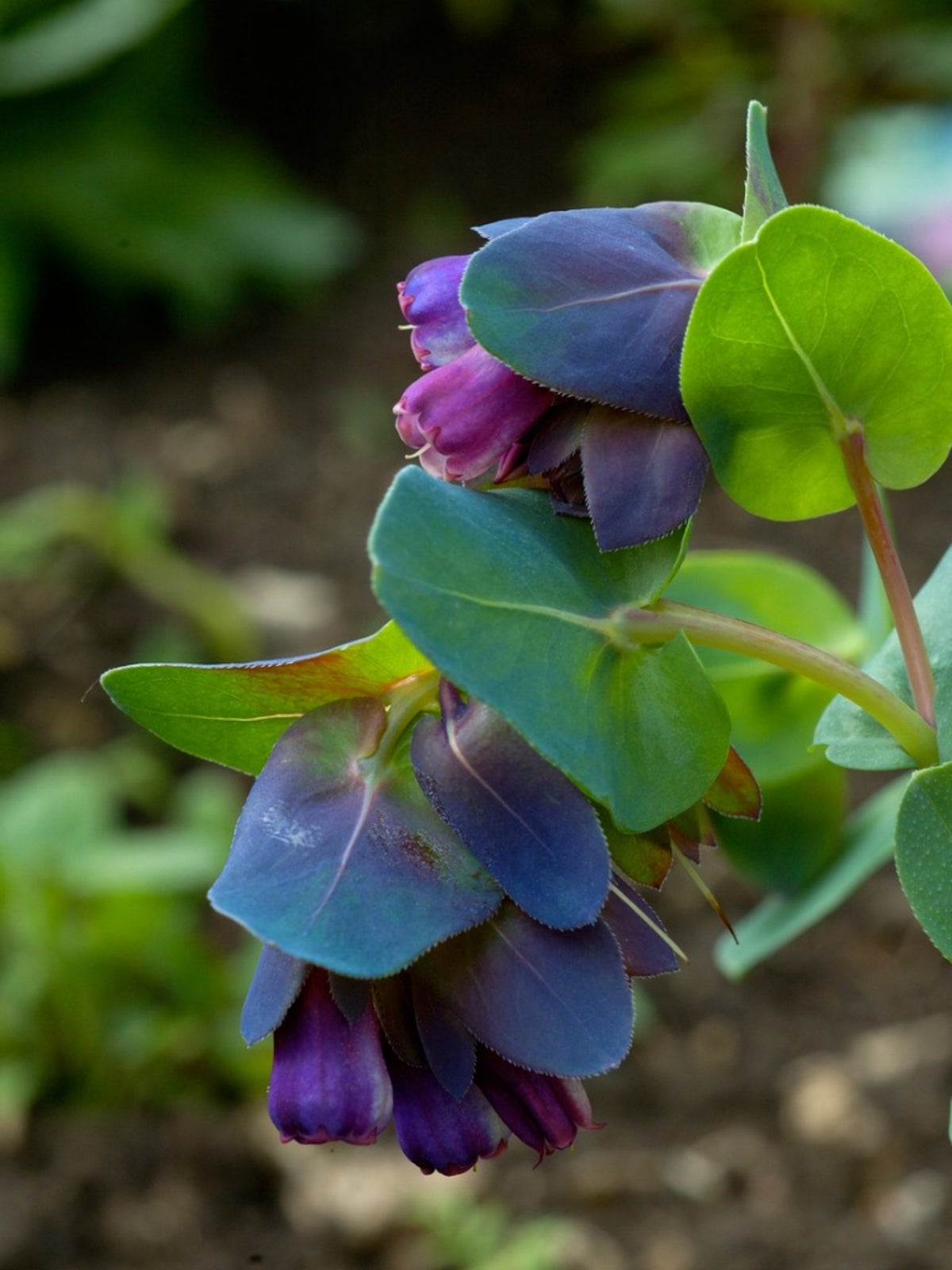Caring For Cerinthe: What Is Cerinthe Blue Shrimp Plant


There is a fun little plant with vibrant, bluish purple flowers and leaves that change colors. Cerinthe is the grown-up name, but it is also called the Pride of Gibraltar and the blue shrimp plant. What is Cerinthe? Cerinthe is a Mediterranean species perfect for moderate environments. Growing Cerinthe plants require USDA plant hardiness zones 7 to 10. This versatile little guy might be the right choice to brighten up your garden.
What is Cerinthe?
In addition to its other names, Cerinthe is also known as honeywort or wax flower from the Greek ‘keros' for wax and ‘anthos' for flower. The plant is an herb related to borage, but the foliage is not as thickly haired. Instead, Cerinthe has thick, greenish gray foliage with softly rounded edges. New leaves are marbled with white, which disappears after the leaves mature. The leaves alternate in whorls up the stem in an attractive pattern. The Cerinthe blue shrimp plant (Cerinthe major 'Purpurascens') may be an annual in colder climes or a half-hardy perennial. The flowers are tiny and insignificant but are covered by colorful bracts. The bracts deepen into a bluer hue as nighttime temperatures cool. During the day they are a lighter, purple tone. These herbs grow 2 to 4 feet (61 cm. to 1 m.) tall and are perfect in beds, borders, and pots.
Growing Cerinthe Plants
The Cerinthe blue shrimp plant is easy to start from seed. Soak the seeds overnight and start them indoors four to six weeks before the last frost. Plant the herb outside in April in most zones. Cerinthe plant care includes a well-drained site, full to partial sun, and moderate water. Potted plants require more water than in-ground plants. The herb is slightly drought tolerant but produces the best flower display when the plant is kept moist but not soggy.
Caring for Cerinthe
This is an easy-to-grow plant and Cerinthe plant care rates on the low-to-moderate scale. This herb will even flourish in rich soil with little to no maintenance. Once you have an established plant, self-seeding ensures a ready supply of plants every year. Outdoor plants will tend to reseed or you can collect seeds, dry them, and save them for the next season. Harvest seeds in fall and save them in envelopes until early spring. You can trim back rangy stems, if you wish, to force a more compact plant. Stake tall plants or use a peony ring to keep stems upright. Once the plant experiences a hard freeze, it will die. In more temperate zones, remove the parent plant in winter and lightly mulch over the seeds. Fluff the soil in spring and the seeds should germinate and produce a new batch of Cerinthe blue shrimp plants. Use a diluted plant food once a month when caring for Cerinthe in pots.
Gardening tips, videos, info and more delivered right to your inbox!
Sign up for the Gardening Know How newsletter today and receive a free copy of our e-book "How to Grow Delicious Tomatoes".

Bonnie Grant is a professional landscaper with a Certification in Urban Gardening. She has been gardening and writing for 15 years. A former professional chef, she has a passion for edible landscaping.
-
 Zinnias On Repeat: 10 Glorious Cut-And-Come-Again Varieties For Endless Summer Bouquets
Zinnias On Repeat: 10 Glorious Cut-And-Come-Again Varieties For Endless Summer BouquetsThese zinnia varieties keep giving all summer, making them the perfect choice for dedicated cutting gardens – or just the occasional homegrown bouquet.
By Ellen Wells
-
 Create A Romantic Garden Straight Out Of Bridgerton: Regency Era Romance In Your Garden
Create A Romantic Garden Straight Out Of Bridgerton: Regency Era Romance In Your GardenTry some romantic garden ideas straight out of Bridgerton. Flowers and gardens in the Regency era were lush and charming and you can get the same look!
By Bonnie L. Grant